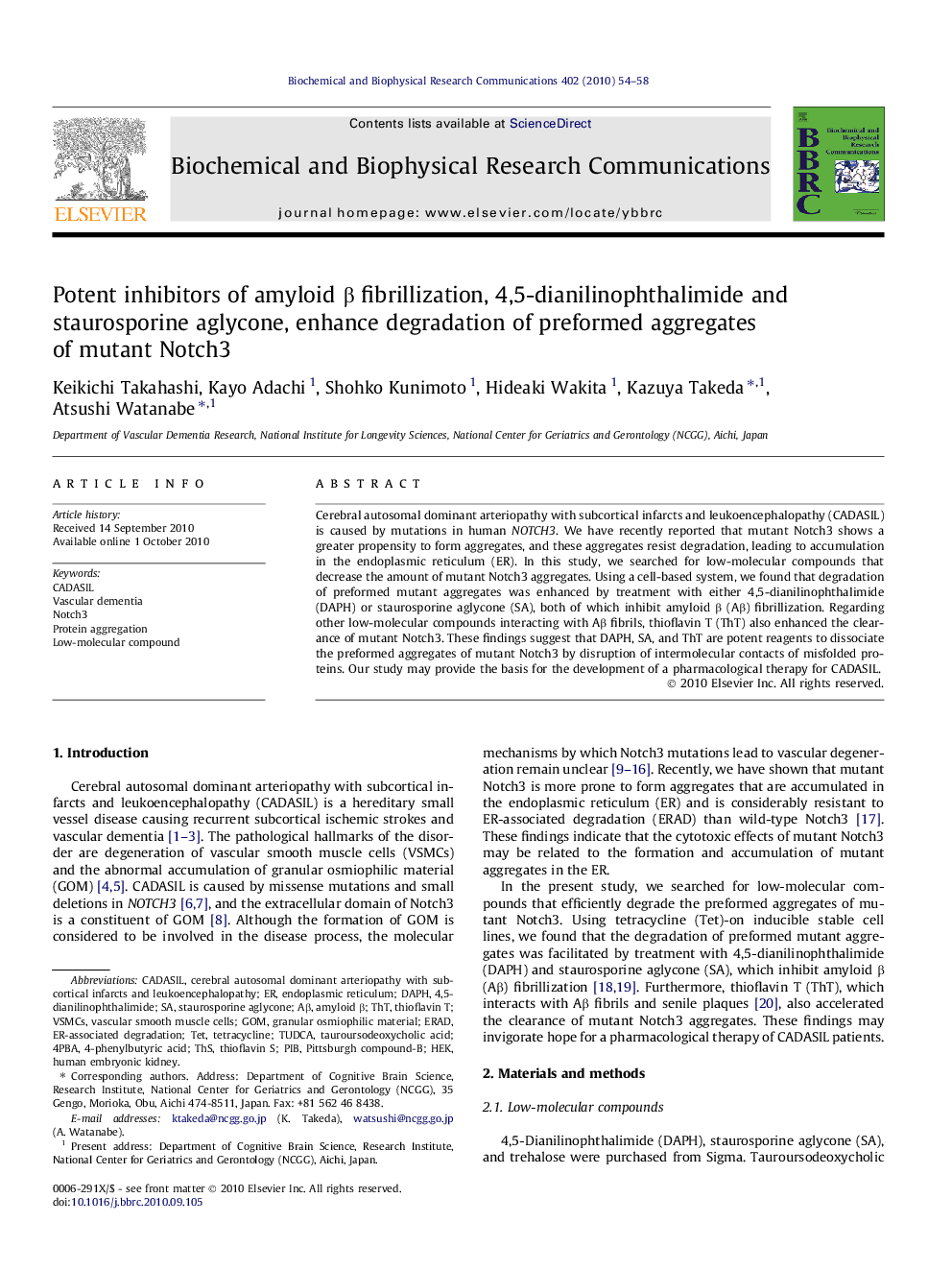| Article ID | Journal | Published Year | Pages | File Type |
|---|---|---|---|---|
| 1930987 | Biochemical and Biophysical Research Communications | 2010 | 5 Pages |
Cerebral autosomal dominant arteriopathy with subcortical infarcts and leukoencephalopathy (CADASIL) is caused by mutations in human NOTCH3. We have recently reported that mutant Notch3 shows a greater propensity to form aggregates, and these aggregates resist degradation, leading to accumulation in the endoplasmic reticulum (ER). In this study, we searched for low-molecular compounds that decrease the amount of mutant Notch3 aggregates. Using a cell-based system, we found that degradation of preformed mutant aggregates was enhanced by treatment with either 4,5-dianilinophthalimide (DAPH) or staurosporine aglycone (SA), both of which inhibit amyloid β (Aβ) fibrillization. Regarding other low-molecular compounds interacting with Aβ fibrils, thioflavin T (ThT) also enhanced the clearance of mutant Notch3. These findings suggest that DAPH, SA, and ThT are potent reagents to dissociate the preformed aggregates of mutant Notch3 by disruption of intermolecular contacts of misfolded proteins. Our study may provide the basis for the development of a pharmacological therapy for CADASIL.
Research highlights► Effects of low-molecular compounds on clearance of mutant Notch3. ► DAPH enhances degradation of mutant Notch3. ► Identification of other low-molecular compounds as enhancers of mutant Notch3 degradation.
